CK-12 Foundation
Ck 12: Life Science: Sources of Water Pollution
[Free Registration/Login may be required to access all resource tools.] Water pollution is a serious issue facing hundreds of millions of people world-wide, having harmful effects on the lives of those people. Learn more about sources of...
Other
The Journey of Water
This interactive tour helps you to understand the journey of water to the springs. Learn about the water cycle and the Florida aquifer, supporting springs and the residents of Florida and how their activities impact the quality and...
Other
The Water Pollution Guide
Welcome to the Water Pollution Guide, where you can find useful information about the sources of water pollution and how they can be treated.
Other
Virtual Field Trip: Water/aquifers
This virtual field trip for middle school students looks at aquifers and their place in the hydrologic cycle. Students learn why and how it is important to protect the source of your drinking water and some unique details about the...
TeachEngineering
Teach Engineering: Introduction to Water Chemistry
Students are presented with examples of the types of problems that environmental engineers solve, specifically focusing on water quality issues. Topics include the importance of clean water, the scarcity of fresh water, tap water...
North Carolina Department of Environmental Quality
Nc Division of Water Resources: North Carolina Aquifers
The aquifers in North Carolina are highly varied in their character and water producing capabilities. Several of these aquifers can be traced over large geographic areas and hence form principal aquifers; significant sources of ground...
Texas Instruments
Texas Instruments: Electrolysis of Water
Students will learn to write the half reactions that occur at each electrode during the electrolysis of water, performed in microscale using a 9V battery as a power source. In monitoring the pH at each electrode, studens will learn that...
CK-12 Foundation
Ck 12: Earth Science: Water Pollution
[Free Registration/Login may be required to access all resource tools.] Describes the sources of water pollution.
CK-12 Foundation
Ck 12: Life Science: Preserving Water Sources
[Free Registration/Login may be required to access all resource tools.] It might seem like there is plenty of water on Earth, but that's not really the case. Water is a limited resource. That means that it is used faster than it is...
TeachEngineering
Teach Engineering: All About Water!
Students learn about the differences between types of water (surface and ground), as well as the differences between streams, rivers and lakes. Then, they learn about dissolved organic matter (DOM), and the role it plays in identifying...
TeachEngineering
Teach Engineering: Environmental Engineering and Water Chemistry
Students are introduced to the fundamentals of environmental engineering as well as the global air, land and water quality concerns facing today's environmental engineers. After a lesson and activity to introduce environmental...
Science Education Resource Center at Carleton College
Serc: Investigating Weather: A House of Seasons
Using pictures from magazines, young scholars will find sources of precipitation and water in this classroom activity. Students will then create a college of these pictures and group them based on the season.
Other
British Nutrition Foundation: Food a Fact of Life: Dietary Fibre and Water
A collection of downloadable resources on the sources of dietary fiber, what it does, the benefits to human health, sources of our water intake, its role in our bodies, and fluid balance. Includes PowerPoints, reference materials, and...
University of Illinois
University of Illinois Urbana Champaign: The Hydrologic Cycle
Water is the source of life on earth. It exists in many forms and is constantly changing. The circulation and conservation of earth's water is called the hydrologic (or water) cycle. Find out how water evaporates, condensates,...
National Institutes of Health
National Institute of Environmental Health Services: Lead Buster Club
This resource is an interactive simulation that will challenge you to find sources of lead in your environment.
Canadian Museum of Nature
Canadian Museum of Nature: Sila: Clue Into Climate Change
The Arctic is where climate is changing at a faster pace than any other place in the world. Explore Water, Earth, Fire, and Air to investigate the basic elements that support all life and learn about the impact climate change is having...
CK-12 Foundation
Ck 12: Earth Science: Water Distribution
[Free Registration/Login may be required to access all resource tools.] Discusses how water is distributed throughout the world. Includes research assignment.
CK-12 Foundation
Ck 12: Earth Science: Water Distribution
[Free Registration/Login may be required to access all resource tools.] How water is distributed throughout the world.
US Environmental Protection Agency
Epa: List of Drinking Water Contaminants
Table outlines the EPA's standards for safe drinking water, defining levels of contaminants and listing possible sources of these contaminants.
US Environmental Protection Agency
Epa: Reservoirs: Holding Tanks for Drinking Water [Pdf]
How do people get their water reservoirs for drinking water? This site features an in-depth explanation of this question. Come and check it out.
Other
Catawba Riverkeeper: Threats to Our Lake and Water
The most common problem on the Catawba River and its lakes is sedimentation. Sediment carried by stormwater runoff from construction sites in North Carolina has been documented as the leading source of non-point source pollution to...
CK-12 Foundation
Ck 12 Exploration Series: Simulations: Physics: Water Fountain
[Free Registration/Login Required] Learn about projectile motion and its relevance to the shape of a stream of water.
Other
Abc Da Energia
ABC Da Energia describes the many ways that energy can be obtained and conserved. It explains different sources of energy, how each works, and how energy can be saved in our daily lives. Interactive energy-saving activities and games...
TeachEngineering
Teach Engineering: Energy
Through nine lessons, students are introduced to a range of energy types--electrical, light, sound and thermal-as well as the renewable energy sources of wind, hydro (water) and solar power. Subjects range from understanding that the...
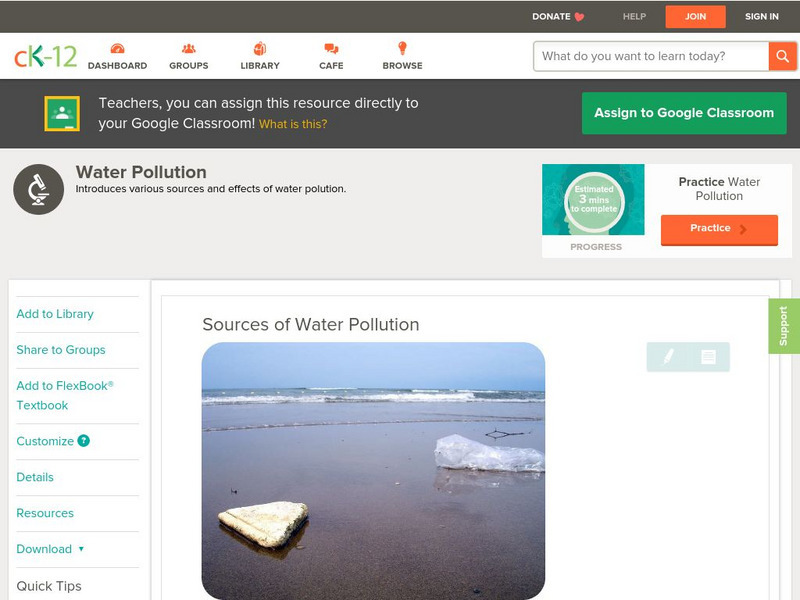



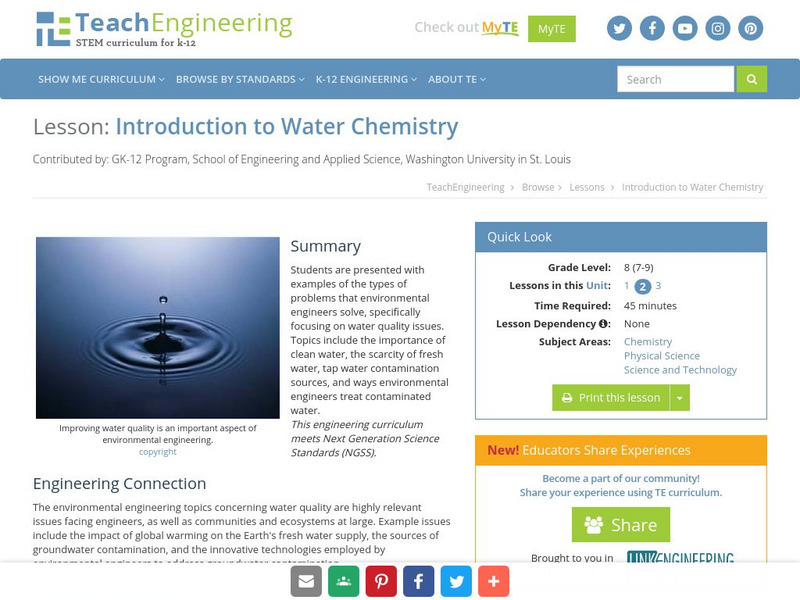



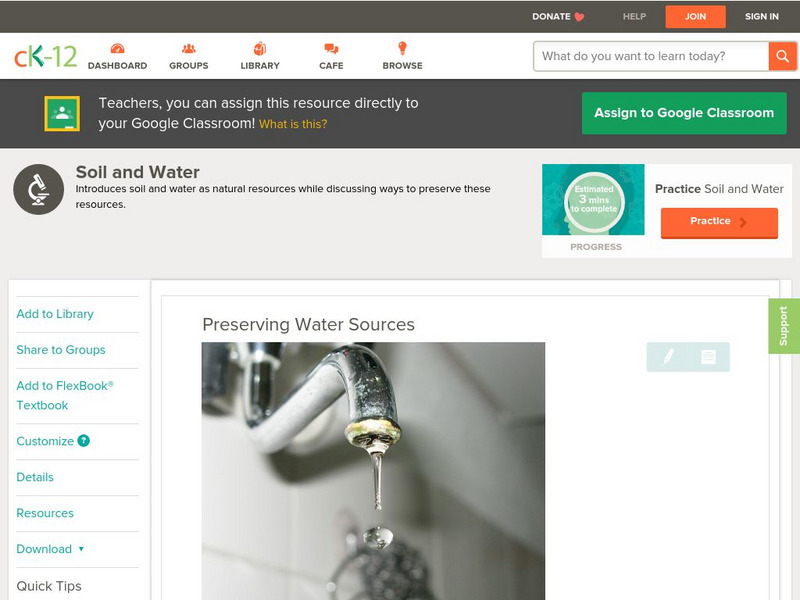


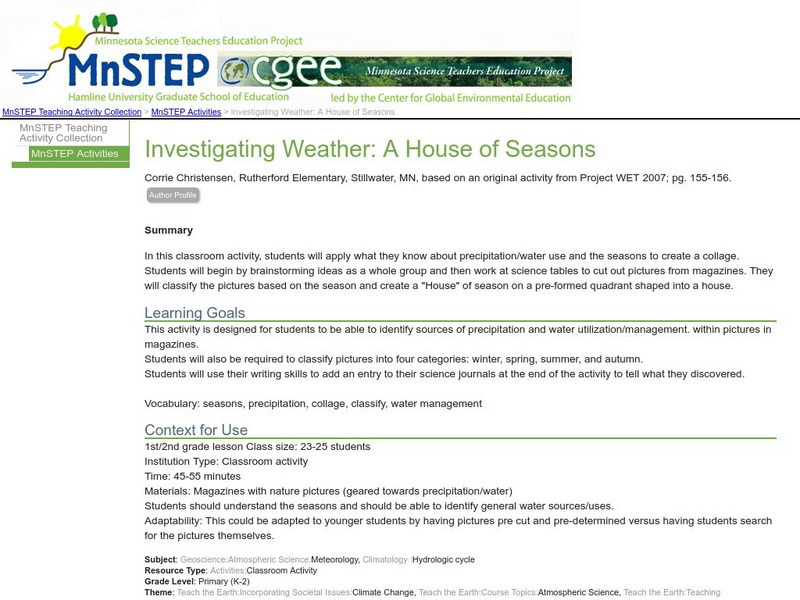
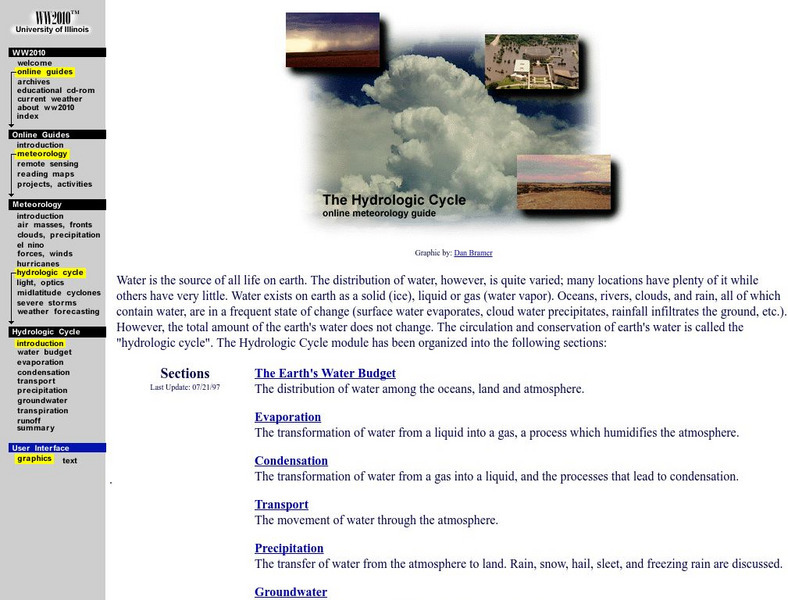

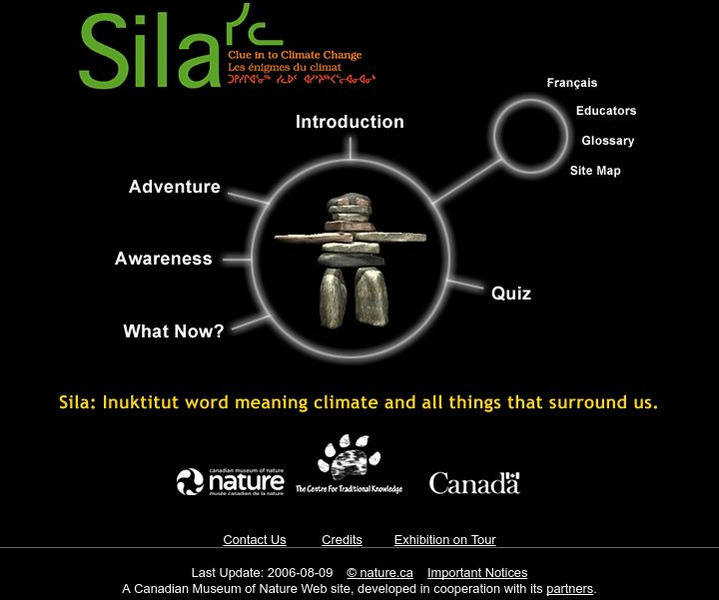
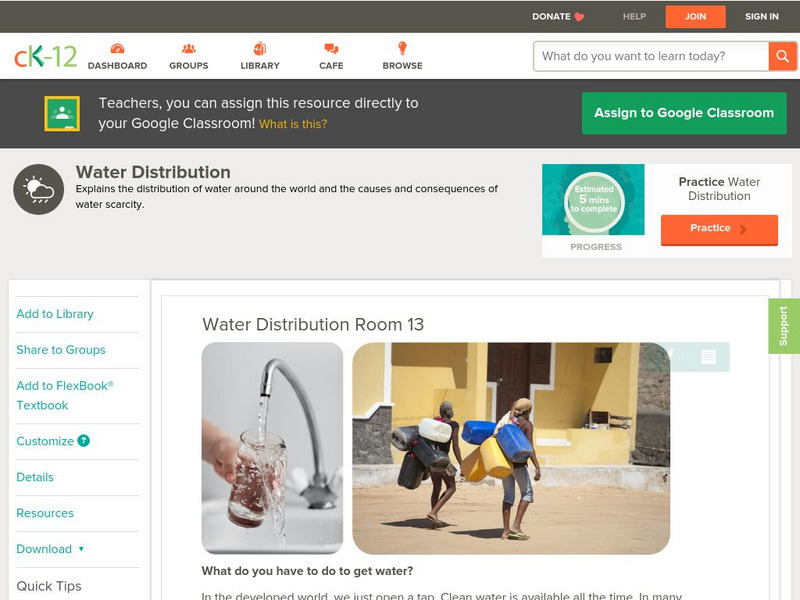


![Epa: Reservoirs: Holding Tanks for Drinking Water [Pdf] Activity Epa: Reservoirs: Holding Tanks for Drinking Water [Pdf] Activity](https://content.lessonplanet.com/knovation/original/784767-be34c4aa4535a4640e6dc98eb70b3542.jpg?1661270399)

